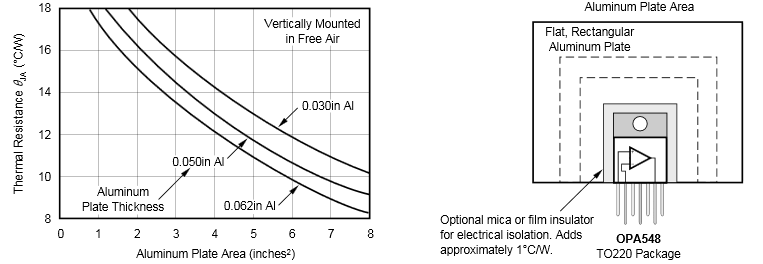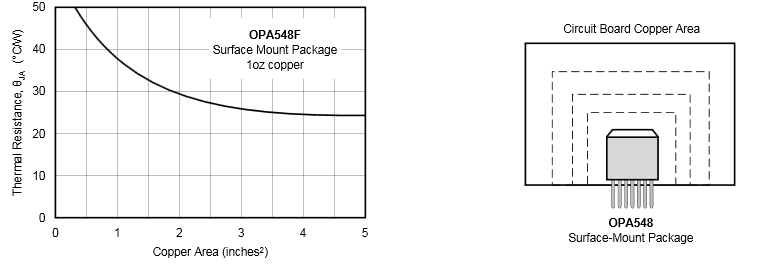ZHCSKM1D October 1997 – December 2019 OPA548
PRODUCTION DATA.
- 1 特性
- 2 应用
- 3 说明
- 4 修订历史记录
- 5 Pin Configuration and Functions
- 6 Specifications
- 7 Detailed Description
- 8 Application and Implementation
- 9 Power Supply Recommendations
- 10Layout
- 11器件和文档支持
- 12机械、封装和可订购信息
封装选项
机械数据 (封装 | 引脚)
散热焊盘机械数据 (封装 | 引脚)
订购信息
10.1.3 Power Dissipation
Power dissipation depends on power supply, signal, and load conditions. For DC signals, power dissipation is equal to the product of output current times the voltage across the conducting output transistor. Power dissipation can be minimized by using the lowest possible power-supply voltage necessary to assure the required output voltage swing.
For resistive loads, the maximum power dissipation occurs at a DC output voltage of one-half the power-supply voltage. Dissipation with AC signals is lower. Application Bulletin SBOA022 explains how to calculate or measure power dissipation with unusual signals and loads.
 Figure 42. TO-220 Thermal Resistance vs Aluminum Plate Area
Figure 42. TO-220 Thermal Resistance vs Aluminum Plate Area  Figure 43. DDPAK Thermal Resistance vs Circuit Board Copper Area
Figure 43. DDPAK Thermal Resistance vs Circuit Board Copper Area